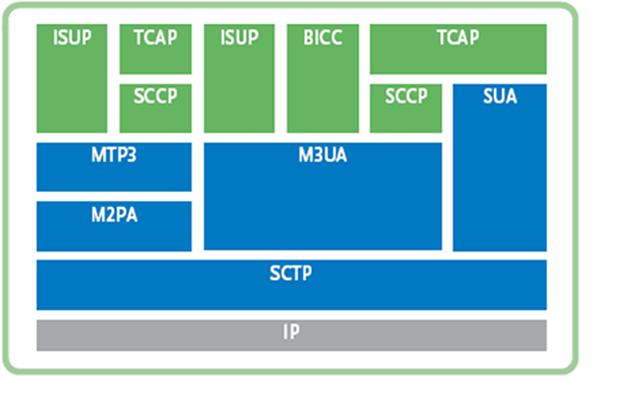Introduction
This document describes the SIGTRAN Protocol support on PGW2200. The Cisco PGW 2200 can use Sigtran Protocol, MTP3 User Adaptation (M3UA) and SCCP User Adaption (SUA) to communicate with Cisco ITPs. Cisco IP Transfer Point (ITP) act as the signaling gateway for the Cisco PGW 2200 to Interconnect with the STP (Signaling Transfer Point) Network in PSTN.
This document was generated from the following thread: PGW2200 - Full SIGTRAN Support, to Help Users to know about the SIGTRAN support on PGW2200 SoftSwitch.
Overview
The Cisco PGW 2200 Softswitch is a carrier-class call agent that performs the signaling and call-control tasks—such as digit analysis, routing, and circuit selection—within the public switched telephone network (PSTN) gateway infrastructure. The Cisco PGW 2200 gives service providers the ability to smoothly route voice and data calls between the PSTN and newer packet networks.
Cisco PGW 2200 Softswitch interfaced with the Signaling System 7 (SS7) network through a pair of SS7 link termination devices (SLTs) and iSLT. Although serviceable, these SLTs had limited scalability, flexibility, features, and support for open standards. These limitations have been addressed with the addition of the Cisco IP Transfer Point (ITP) as the signaling gateway for the Cisco PGW 2200.
The Cisco ITP solves these limitations with proven technology and a carrier-class system. It supports capabilities that include signaling transfer point (STP), signaling transport over IP and ATM, and signaling gateway for nextgeneration end nodes such as service switching point (SSP) and service control point (SCP). Cisco ITP is certified by Telcordia as an ANSI STP, is completely based on open standards, and provides STP-class availability. Cisco ITP is offered on multiple platforms and can scale from 4 to 800 links.
SS7 AND SIGTRAN OPEN STANDARDS
Cisco ITP uses open industry standards for traditional SS7 over time-division multiplexing (TDM) links, as well as for next-generation signaling over ATM (MTP3b) and IP (Signaling Transport [Sigtran]). In addition, Cisco ITP has been successfully tested to interoperate with equipment from 18 other vendors using Sigtran protocols.
Cisco ITP supports only the following signaling standards shown in Table. It supports SS7 Signtran M2PA, M3UA Protocols.
Protocol | Specification |
MTP (1, 2, 3) | ITU-T Q.701-Q.709 White 1996 (interworks with Blue). ANSI T1.111-1996, China, Japan |
Signaling Connection Control Part (SCCP) | ITU-T Q.711-Q.719 White 1996 (interworks with Blue). ANSI T1.112-1996, China, Japan |
High-speed links (HSLs) | ITU E1: Q.2140, Q.2110, Q.2210, Q.2144 ANSI T1: GR-2878, I.363, I.361 |
Stream Control Transmission Protocol (SCTP) | IETF RFC 2960: SCTP IETF RFC 3309: SCTP Checksum Change |
MTP2 Peer-to-Peer Adaptation Layer (M2PA) | IETF Sigtran SS7 M2PA Draft Standard, March 2, 2001 |
MTP3 User Adaptation (M3UA) | IETF RFC3332: Sigtran SS7 M3UA |
SCCP-User Adaptation (SUA) | IETF Sigtran SS7 SUA Draft Version 16 |
PGW2200 as Signaling Gateway
Operating as the signaling gateway for the Cisco PGW 2200, the Cisco ITP uses Sigtran M3UA/SCTP/IP between the Cisco ITP and Cisco PGW 2200. To the SS7 network, the ITP uses SS7/TDM, HSL (SS7oATM), or M2PA/SCTP/IP depending on that service provider’s requirements.
SS7 & SIGTRAN Protocol Stack

PGW2200 as Signaling Gateway
ere's a document which gives complete info on signtran protocol support.
http://www.cisco.com/warp/public/cc/pd/witc/iptrn_wp.pdf
Pl rate if info is useful. Thanks